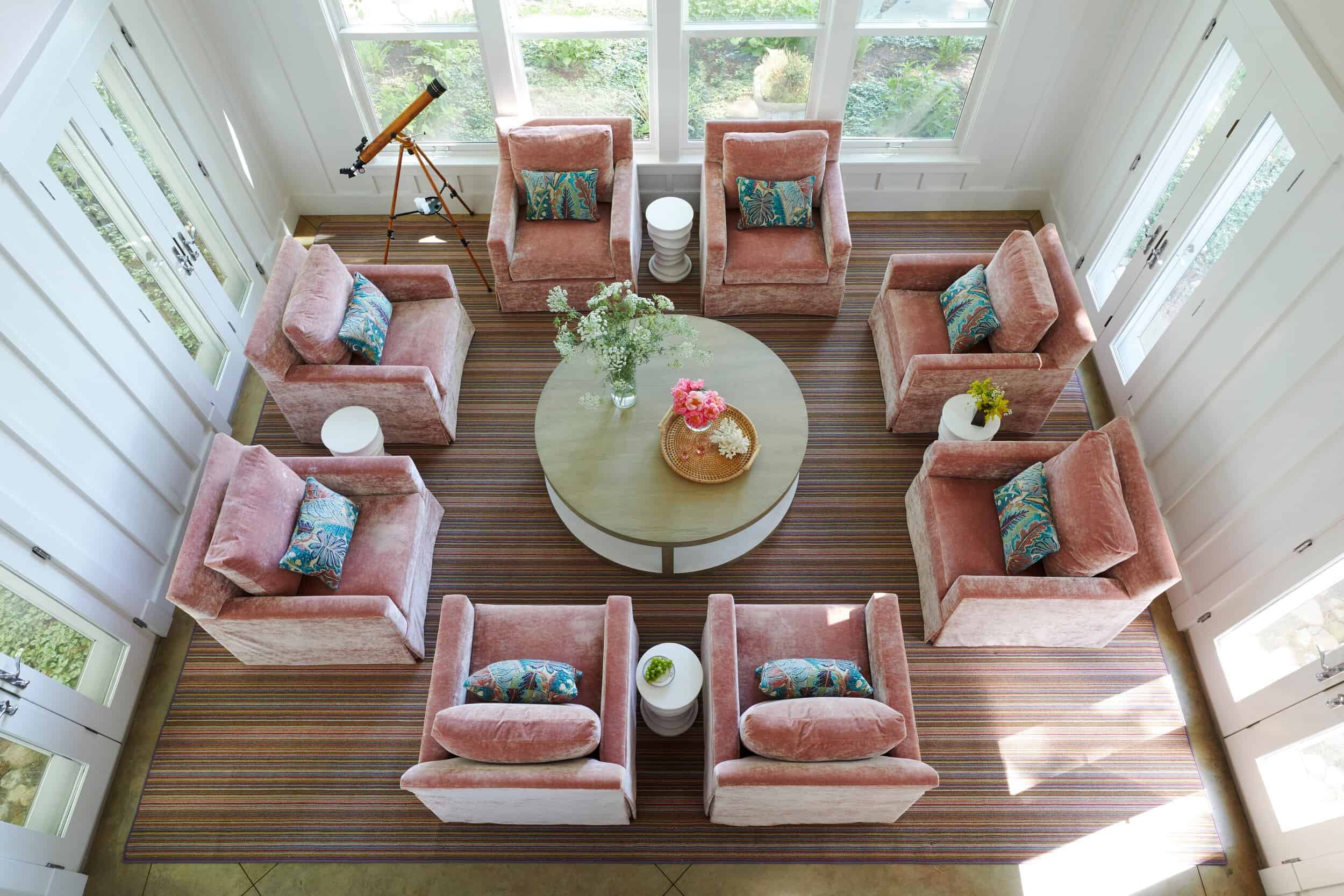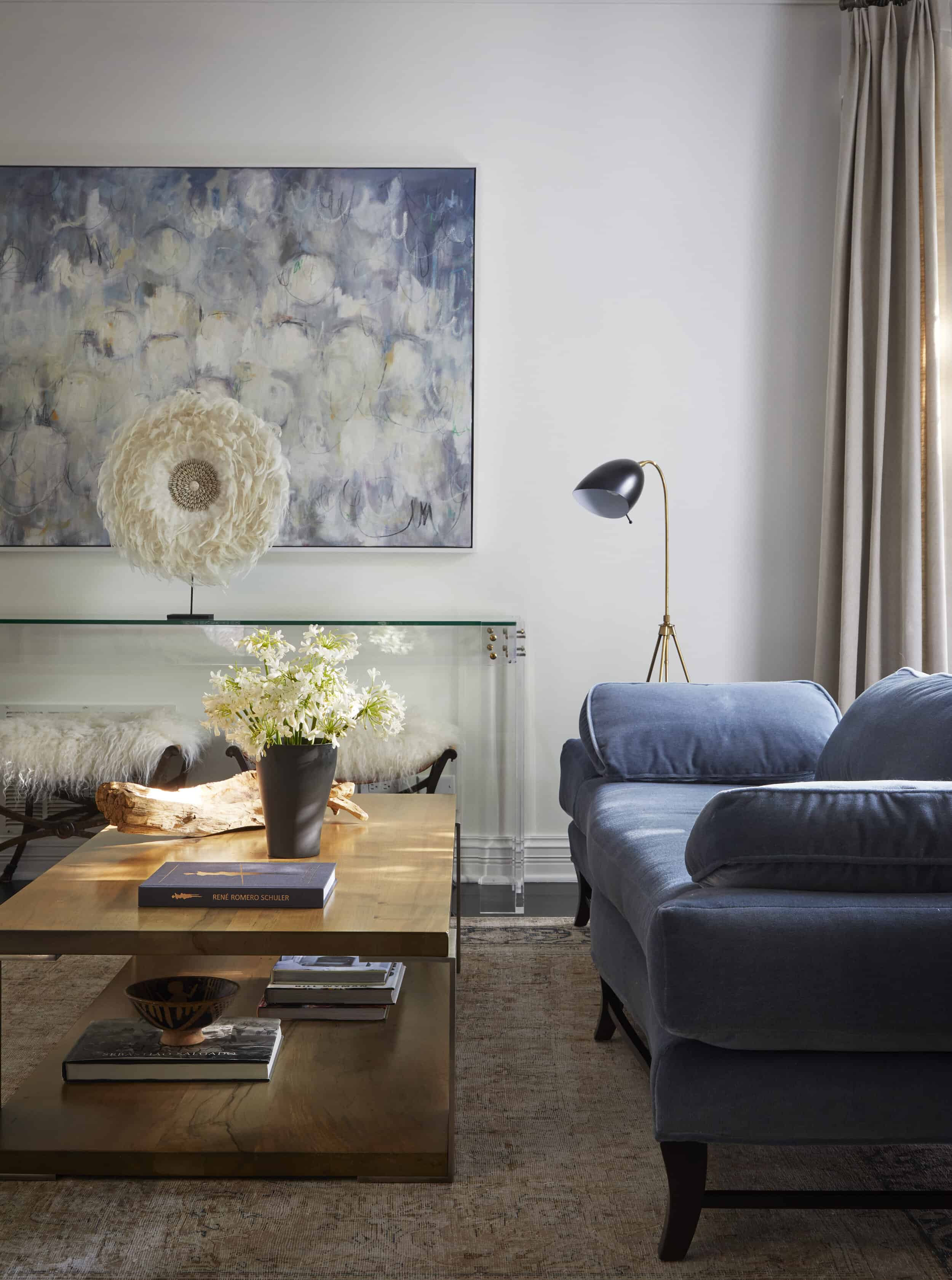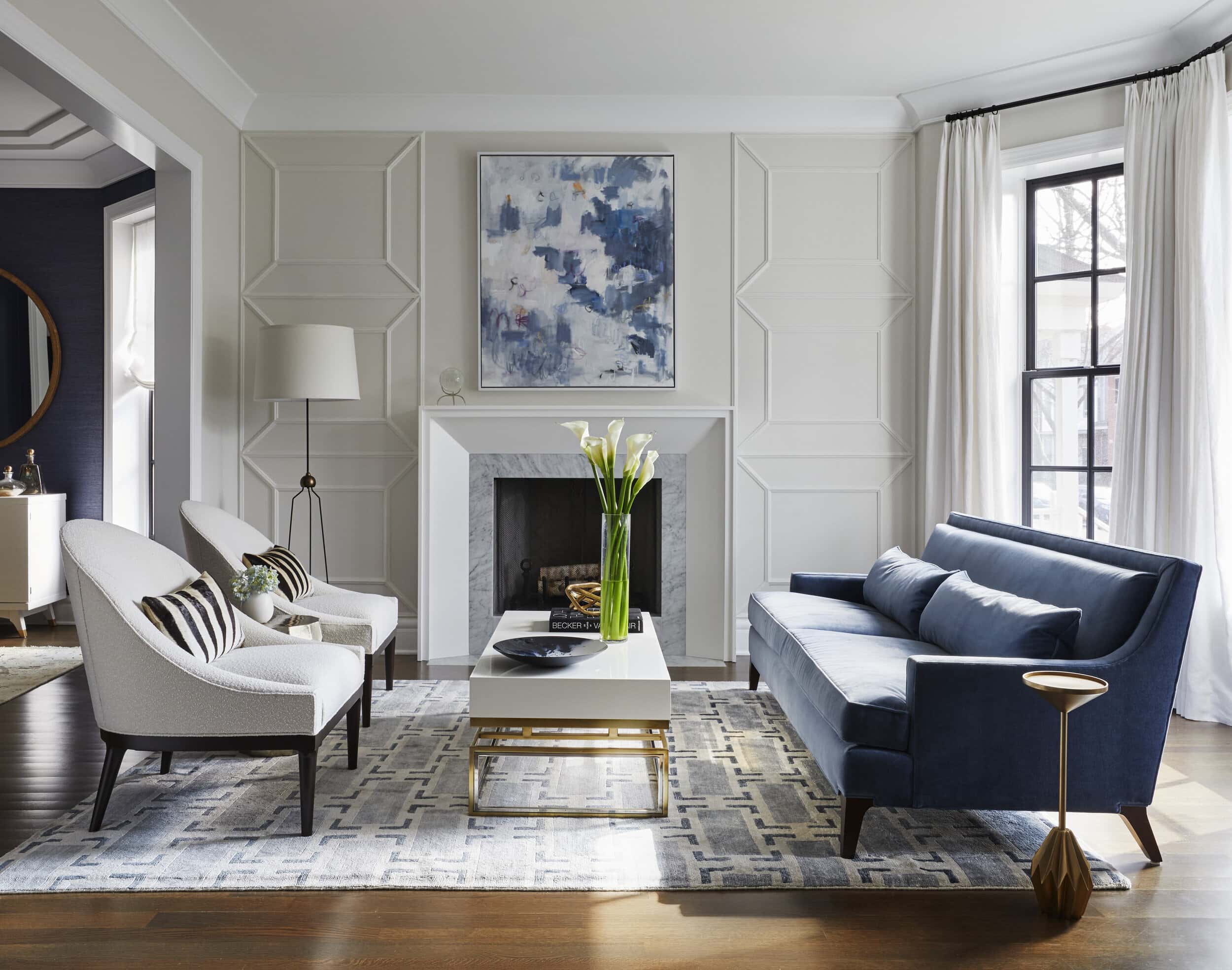From disproportionate size and scale, to unsuitable fabrics for the inevitable mishaps of everyday life, to falling victim to short-lived trends — I’m here to help you avoid some of the most common mistakes when it comes to selecting furniture.
Scale within the Room
The first and most important step when choosing a piece of furniture is to measure your space.
Make sure you know the heights of the wall, dimensions of the room, staircases, entrances and doorways to ensure your furniture fits perfectly in the space.
You don’t want your space to appear crowded, so enough room for movement around each piece ensuring easy traffic flow is essential. It doesn’t matter how beautiful a piece is – if you are going to constantly be bumping your knee on the arm of your new sofa, it’ll drive you crazy and leave you with a few bruises. Not worth it!
Always select furniture that is proportional to the size of your space.
Scale and Aesthetic with Your Current Furniture Lineup
Not only is scale within your four walls critical, but it’s also important to look at the comparable scale of other pieces of furniture in order to create visual balance. For example, if you pair a large and dominant armchair with a small, dainty side table, you will always look at the pairing and just feel like something is off. While that’s not to say you can’t pair masculine and feminine objects with different lines (in fact, it’s one of my favorite design duos!), you always have to keep an eye on the scale to make sure it all works together.
Unbalanced scale can certainly be a visual red flag, but it also makes each piece less functional. For example, consider the length of your coffee table compared to your sofa, or the height of your side table in relation to your armchair. When making a big furniture investment, you want to ensure it’s not only beautiful, but also functional.
As for determining the aesthetic fit of the piece, I always recommend bringing home a fabric swatch so you can see how your new addition will look with the room’s current color palette and textures. AKD Design Tip: look at your color swatches in every form of light: morning light, afternoon light, and artificial nighttime light. Make sure the hue speaks to you at all hours!
Balancing Art, Accessories, and Lighting
Not only should the larger pieces of furniture grounded within your room drive your decision on a new purchase, but also consider the impact your art, accessories, and lighting make on a space, as these pieces can often establish the soul of a room. Look at the colors, the shapes, and the textures found throughout the design details and keep this in mind when selecting your new piece.
Maintenance and Durability of the Materials
My approach to design begins and ends with one thing: your lifestyle. If you have a home bustling with kids and pets, or you’ve become the neighborhood hotspot for entertaining, you need furniture that can withstand the jumping, climbing, spilling, and bumping (let’s hope the first two are coming from the kids and pets), so it’s crucial you select furniture with your lifestyle in mind.
This is where my beloved high-performance fabrics come into play. In recent years, technology has advanced to the point where these materials are not only functional and durable, but they also look and feel amazing in your space. Yes, the price will increase – but the durability and longevity of these fabrics is unmatched and in my opinion, worth every penny. Be fearless and enjoy that glass of pinot noir on your new white sofa!
Pro tip: wool and mohair are great alternatives for high-performance fabrics that you’ll hear me talk about constantly on the AKD blog. We use these fabrics in almost all of our projects thanks to their reliability and luxuriousness.
When it comes to rugs, I always prefer 100% wool for its cleanability. And, depending on the aesthetic of your space, patterned rugs can be your best friend to strategically camouflage any accidents.
Lastly, let’s not forget our friend: fabric sealant. When choosing a non-indoor/outdoor fabric, I always recommend the final step of a fabric sealant to help protect your piece and give it staying power.
The Longevity of the Style
Design trends come and go quickly, so you don’t want to end up with an entire room of furniture that reflects a trend that didn’t last. If you’re drawn to a current trending color or style, I recommend starting small. Keep the larger pieces of furniture grounded in timeless design, and accessorize with colors, styles, patterns, and fabrics that are currently catching your eye — think pillows, blankets, lampshades, or even rugs that can be switched every so often.
Have fun with it, of course, but remain true to who you are and keep your eye on the long game. Longevity in furniture is key!






